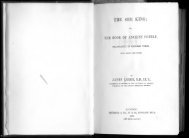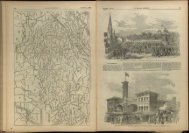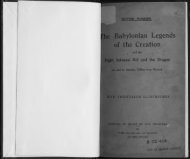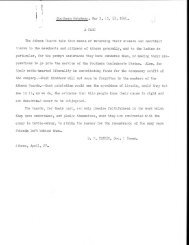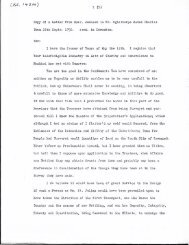07 - 08.pdf - University of Georgia
07 - 08.pdf - University of Georgia
07 - 08.pdf - University of Georgia
Create successful ePaper yourself
Turn your PDF publications into a flip-book with our unique Google optimized e-Paper software.
WCwfaf £? ti-w. C'refcentJTos.<br />
\ C 280 ]<br />
APOCYNUM ANDROS^MIFOLIUM. TUTSAN*<br />
» LEAV'D, or FLY-CATCHING DOGSBANE*<br />
4-4-5^4-4-^^^^<br />
Clafs and Order.<br />
I PENTANDRIA DIGVNIA*<br />
^^ Generic CharaEl.er.<br />
^^V~ Cor. campanulata. Glandule 5 cum ftaminibus alternas.<br />
^^1 Specific Character and Syncvyms.<br />
fFAPOCYNUM -andr<strong>of</strong>temifolium caule rccllufculo herbaceoi<br />
foliis ovatis utrinque glabria, cymis termi-<br />
nalibus. Lir.'i. Syft. Vegetal, ed. 1 4. Murr.<br />
p. 2 58. Ait. Kew. v. i . p. 303.<br />
APOCYNUM canadenfe; faliis andrufasmi majoris. Bocc.<br />
jicc. 3 5. t. 1 6. /. 3. MoriJ. Hift. 3 . p. 609.<br />
/. 15. /. 3. /. 16.<br />
In addition to the powerful recommendations <strong>of</strong> beauty and<br />
fragrance, the Tutfan-leav'd Dogfbane interefts us on account'<br />
ol the curious ftruQure <strong>of</strong> its flowers, and their fingular<br />
property <strong>of</strong> catching flies.<br />
This fpecies is a native <strong>of</strong> different parts <strong>of</strong> North-America ;<br />
Mr. W. HALE, <strong>of</strong> Alton, Hr.nts, who refided at Halifax in<br />
i\ova-Scotia feveral yeau, brought me fome feeds <strong>of</strong> it ga-<br />
tV.c'ed in that neighbourhood, which vegetated, and produced<br />
tiowering plants: it is not new to this country, being known<br />
to MORISON who figures it, and to MILLER ,who cultivated<br />
it in 1731. .<br />
It is a hardy perennial plant, growing to about the height<br />
<strong>of</strong> a foot and a half, or two feet, and flowering from the<br />
beginning <strong>of</strong> July, to September; it has a creeping r,vjt,<br />
v,!.ereby it increafes greatly in light dry foils, a-nd warm<br />
lunations, fo as even to be troublefome.; it will not thrive in<br />
a vet foil; with us it produces feed-vefiels but rare'.y; is<br />
propagated by parting its roots in Autumn or Spiing; Mi LLER:<br />
rccommends March as the m<strong>of</strong>t'proper feafcn, or it iray be<br />
railed from feeds, which in certain fituauons and fealons<br />
ripen here.<br />
The



